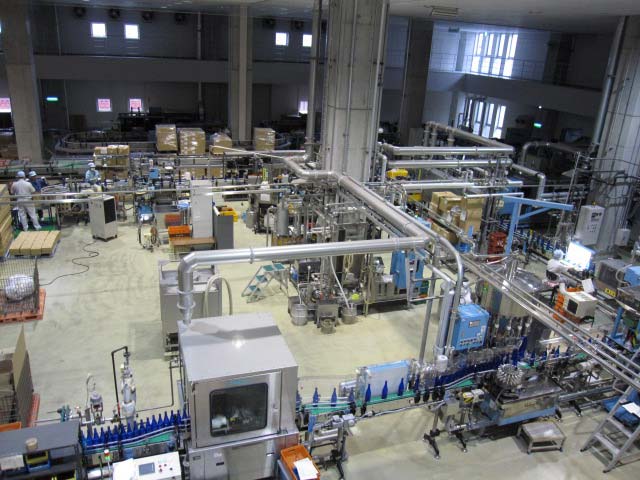Tsume-kuchi sagyō
- 【English】
- Bottling and packing operation
- 【Japanese】
- 詰口作業
An inclusive term for the bottling and the filling of seishu into containers such as cartons, small cups, bag-in-boxes and so on.
Automatic bottling equipment connects the various stages of tsume-kuchi into one continuous process: the largest machines can handle around 30,000 bottles an hour. When the filling process is carried out manually (in cases of small lots or unusual bottle shapes), this is called te-zume (手詰め), bottling by hand.
The sake is heated to 65°C at the bottling stage to reduce contaminants. The process of heating the sake immediately prior to filling, then bottling the sake while still hot, is called nesshu binzume (熱酒瓶詰). When the sake is bottled cold, then heated together with the container after, this is called binkan binzume (瓶燗瓶詰). Automatic machinery employs the former system. In such cases as nama-zake where the sake is bottled unheated, sterile bottling is made possible by treating the sake with membrane filters and such like.
The bottled product is checked for liquid level, cracks, impurities and so on. This inspection is known as ken-bin (検瓶), and is carried out visually for every single bottle. Recently, visual checks have been replaced in some cases by devices which inspect bottles and their contents automatically and machines to check filling volume by weight and other methods, and other highly efficient automated systems of inspection have also been introduced.

tsumekuchi sagyo

